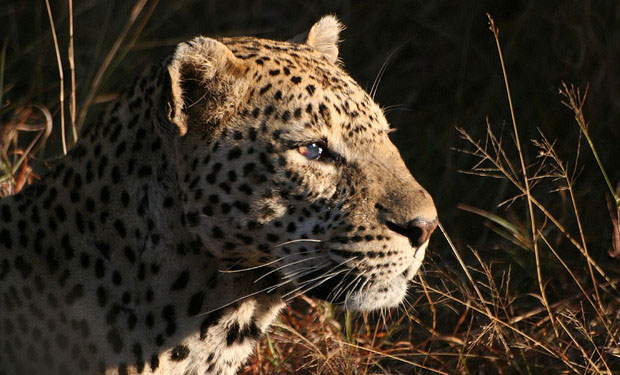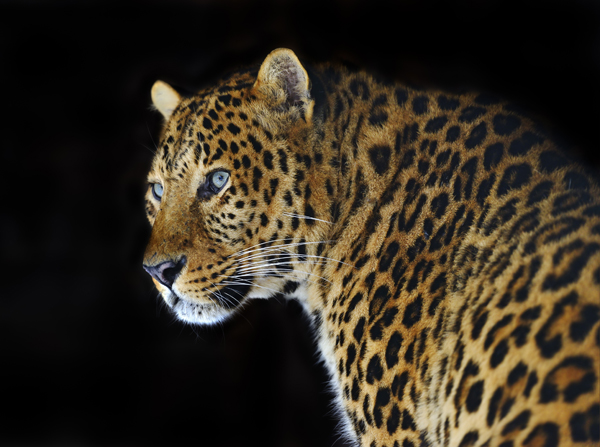
Lagadema, Eye of the Leopard photo by Beverly Joubert
The Reclusive and Highly Adaptable Leopard Is Vulnerable
The leopard is known as a a reclusive and highly adaptable cat. These traits led to the assumption that the leopard populations were not at risk in the wild. Historically the leopard roamed over approximately 13.5 million square miles in Africa, Asia and parts of the Middle East. However, a recent peer-reviewed article published in PeerJ Leopard (Panthera pardus) status, distribution, and the research efforts across its range suggests that leopards have lost as much as 75% of their historical range over the last two hundred years.
This study, conducted by a team of fourteen scientists representing fifteen universities and organizations including the Zoological Society of London, the Wildlife Conservation Society, the Iranian Cheetah Society, National Geographic and Panthera, is thought to be the first to assess the leopard’s status globally across nine subspecies and has received praise from the scientific community for its scope and detail.
The researchers analyzed 6,000 records from 2,500 locations and more than 1,300 sources to map the leopard’s present and historic ranges. The year 1750 was chosen as a starting point because this date was before the beginning of the Industrial Revolution and the colonial era in Africa.
The findings show the leopard’s range has decreased by 63-75% with only 3 of the 9 subspecies represented in 97% of the big cat’s current range. Three other subspecies, the Arabian leopard; the North Chinese leopard; and the Amur leopard found in the Russian Far East retained only 2% of their historical range. In Southeast Asia and the Middle East, the leopard has nearly vanished. Only a fraction (17%) of the leopard’s current range is protected land.

Photo Credit @kyslynskyy
Study Suggests the Leopard Be Reclassified as Vulnerable
The study’s findings encouraged the cat specialist group of the International Union for Conservation of Nature to recommend that the leopard (Panthera pardus) be reclassified on its Red List of threatened species as “vulnerable”, indicating the need for stronger conservation efforts. The species is currently listed as “near threatened,” with three subspecies classified as “critically endangered” and two others as “endangered.”
Like lions and tigers, leopards are threatened by human activity including the destruction of habitat, overhunting of prey animals, revenge killings by farmers who lost livestock, the illegal trade in leopard skins and parts and to a smaller extent trophy hunting.
The Leopard Needs Wildlife Biologists Attention
Leopards receive far less attention from conservationists than African lions, tigers and cheetahs. This neglect is reflected in the scientific literature. This study found that of 330 articles on leopards published from 2000-2015, 69% concerned only two subspecies. Three subspecies have less than 5 research articles devoted to them.
Dr. Philipp Henschel, the lion program survey coordinator for Panthera, thinks wildlife biologists are partly at fault for failing to notice the leopard’s decline. Lions and cheetahs are easier to study because they can be observed from a vehicle, but the elusive leopard are mostly seen in photographs from camera traps requiring extra effort to install. Dr. Henschel said “I think that’s something that biologists have to be honest about. Biologists have to start picking up and be ready to invest a lot of sweat into counting these cats to show the world how rare they have become.”
I’m happy to hear the plight of the leopard has been identified and has been brought to the forefront; so to speak. I remember reading an article, that a few years ago the Amur was nearly extinct, but he has made a recovery; let’s hope the recovery continues for years and years to come ???